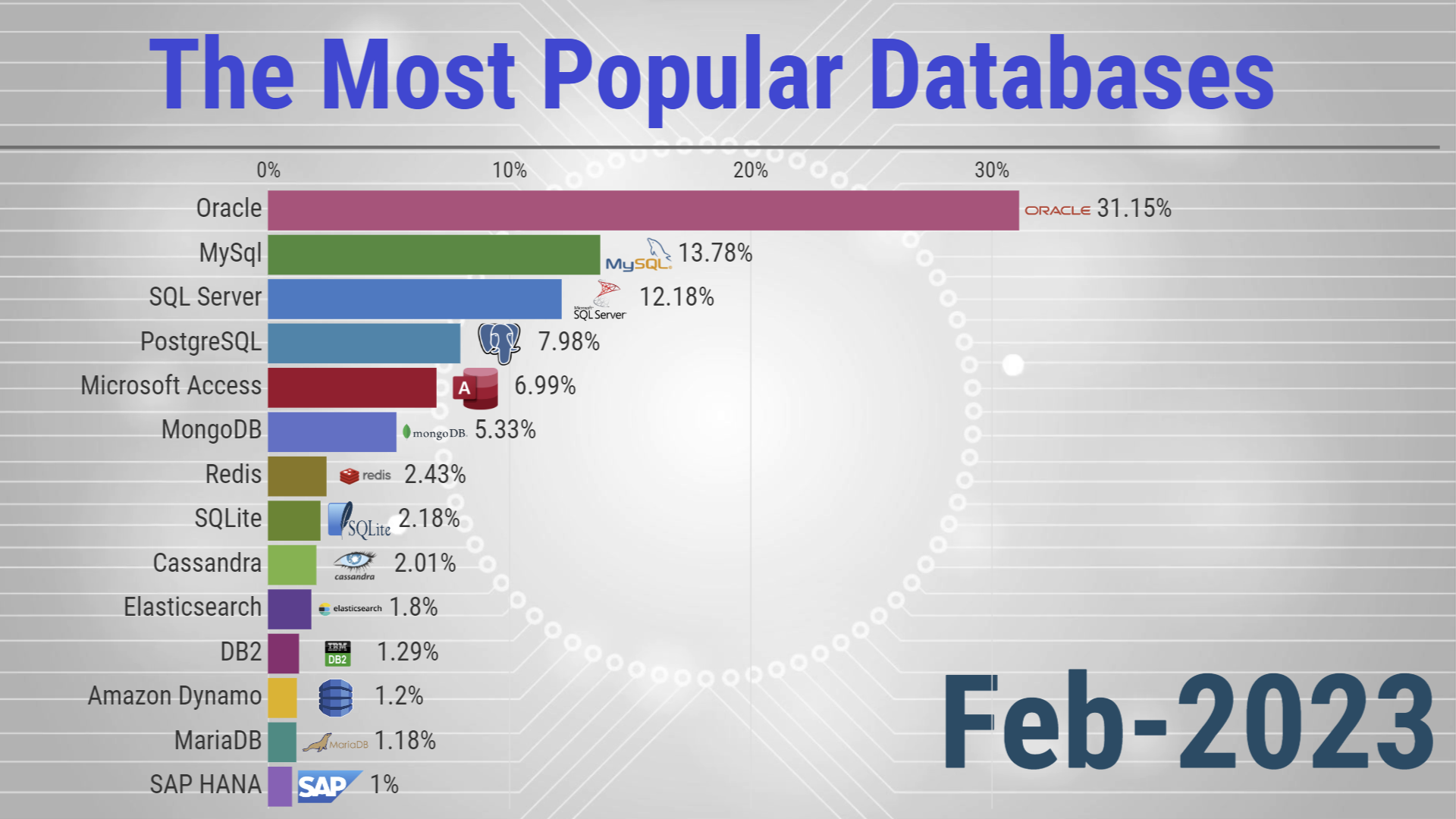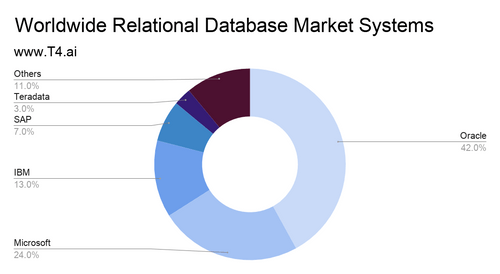Databases are a very practical and useful subject. Before studying it, we need to know its trend like DB-Engines Ranking. Otherwise, we may study obsolete technologies.
Market Share of Database Management Systems (DBMSs)
The DBMS industry offers diverse technologies such as ORDBMS (object-relational), RDBMS (relational), XDBMS (XML), NoSQL, etc.

The chart below shows RDBMS market share in 2017. The RDBMS market is concentrated among a few vendors.
|
I asked my North Korean friend how it was to live in North Korea. He said he can’t complain. |
